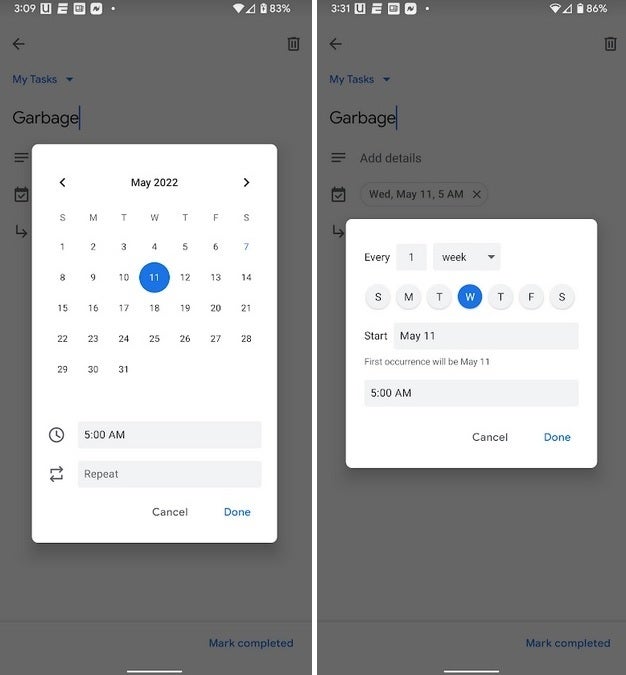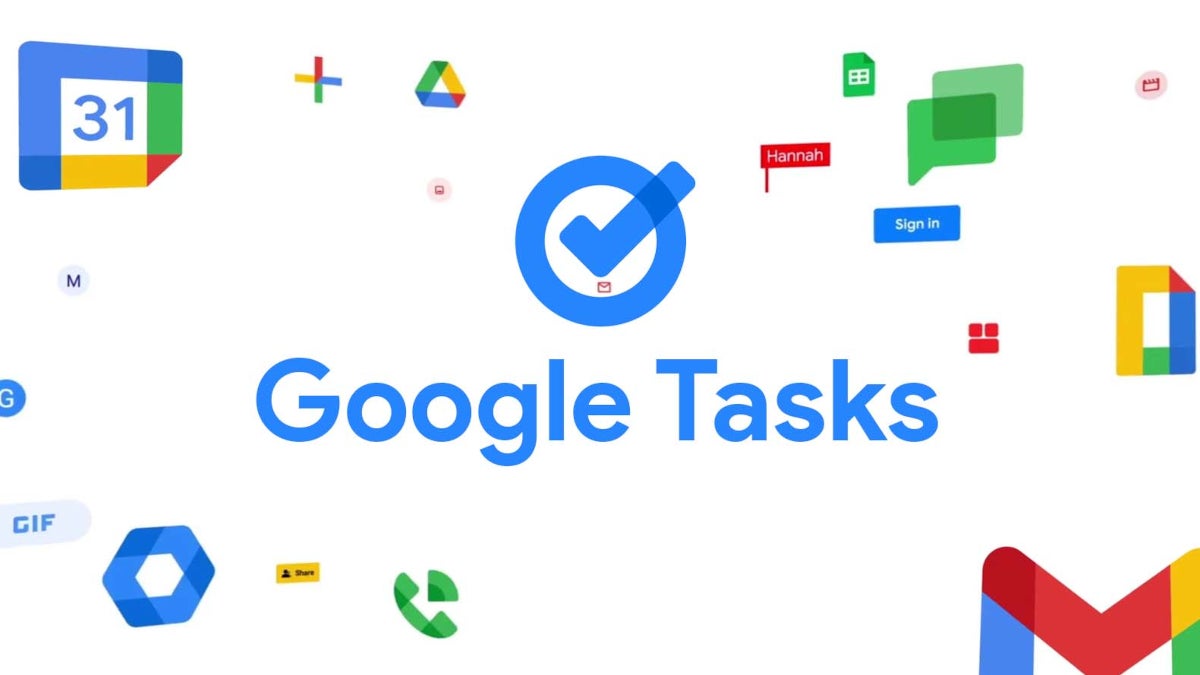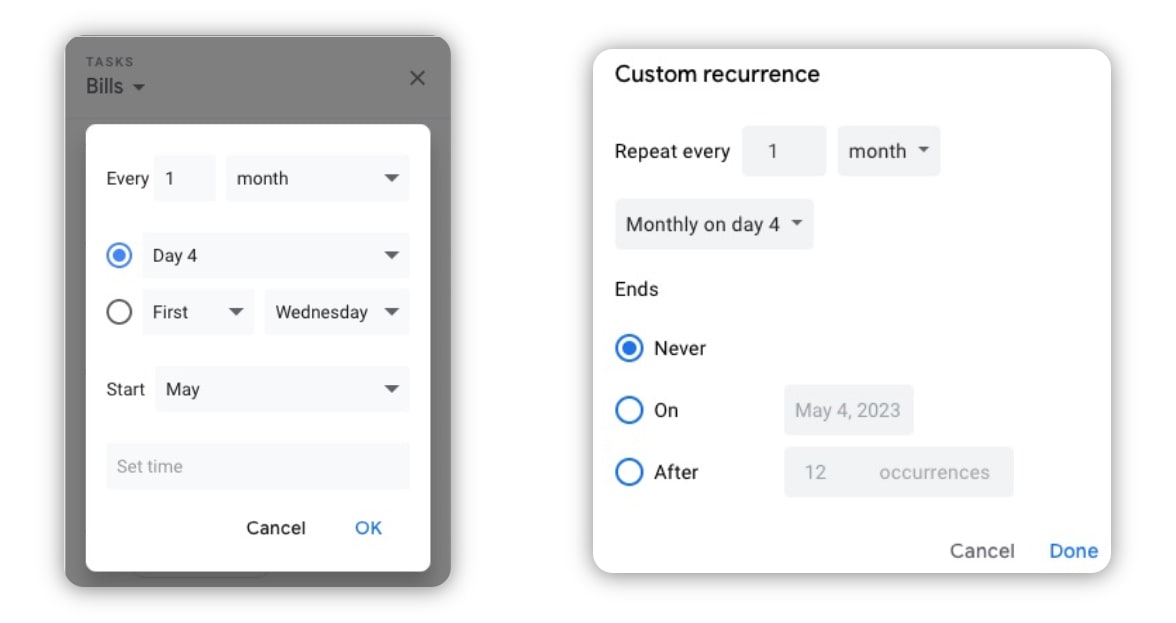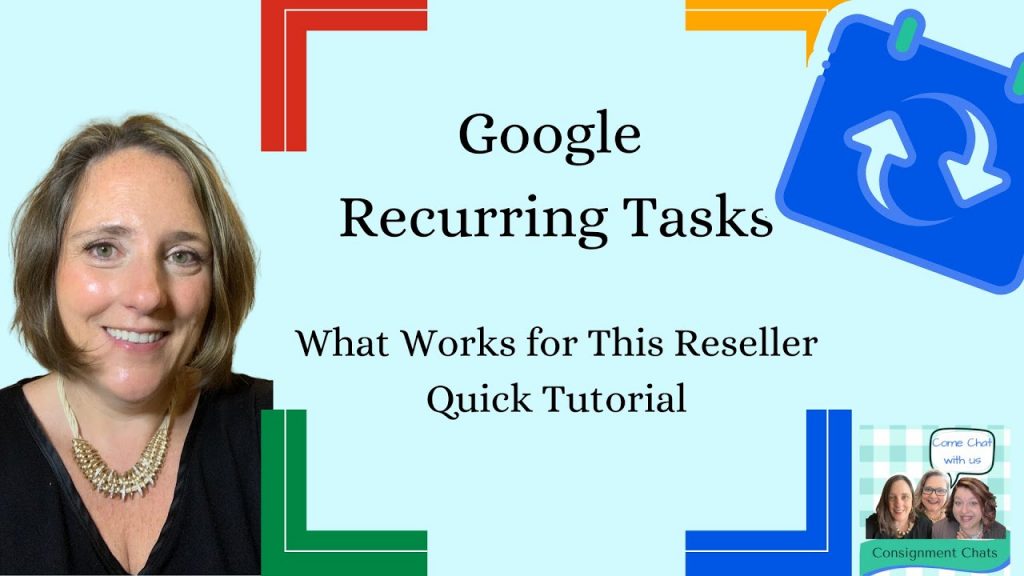Mastering Google Tasks: Easy Steps to Set Up Recurring Tasks. Learn how to master Google Tasks with simple steps to set up recurring tasks. Stay organized & boost your productivity effortlessly!

Understanding Google Tasks: Key Features & Functionality
Google Tasks serves as a productivity tool that helps users organize their tasks effectively. Its integration with other Google services enhances interconnectivity. Users can create, manage, & quickly access their tasks across devices. Recurring tasks simplify repeating actions, ensuring important activities aren’t forgotten. This feature benefits both personal & professional planning.
A Historical Overview of Google Tasks’ Evolution
Google Tasks launched in 2008, providing users with a minimal task management solution. Over time, updates added features like deadlines & subtasks. Integration with Google Calendar allowed for better scheduling. Recent enhancements introduced mobile app functionality, enabling on-the-go task management. This evolution reflects user needs & technological advancements.
Steps for Successfully Setting Up Recurring Tasks
Begin by opening the Google Tasks app or website. Create a new task or select an existing one. Click on options to set a due date. Here, users should enable the recurring feature. Specify frequency, like daily, weekly, or monthly. Confirm settings to activate your recurring task. Reviewing & editing the task helps maintain organization.
Advantages of Utilizing Google Tasks for Recurring Tasks
Employing Google Tasks promotes efficient time management. Users benefit from reminders, keeping important tasks in mind. Automatic repetition alleviates the burden of manual entries. Accessing tasks from multiple devices ensures continuity. Improved productivity results from seamless integration with other Google services.
Tackling Common Challenges with Google Tasks Configuration
Users may face difficulties setting up recurring tasks initially. Confusion often arises over frequency settings. To mitigate this, refer to help documentation or tutorials. And another thing, syncing issues between devices can occur. Regularly updating apps & clearing cache can resolve most technical problems.
Future Prospects for Google Tasks Features & Capabilities
Anticipated improvements include enhanced user interface design. Features promoting collaboration among users may emerge. Advanced reminders could further personalize task management. Integration with artificial intelligence may also optimize task recommendations. Continuous improvements will likely focus on user feedback & technological innovations.
What Are Google Tasks?
Google Tasks is a simple task management tool. It is connected with your Google account. This means you can access it on many devices. You can organize your tasks easily. It allows you to create, delete, & modify tasks. This tool helps users stay organized. You can prioritize your daily tasks effectively.
One key feature is its integration with Gmail. You can create a task from your emails. This makes task management very convenient. You can also create multiple lists. Each list can have its own set of tasks. This adds more flexibility to your task organization.
Google Tasks offers an easy-to-use interface. Finding & managing tasks is straightforward. Users can view their tasks in a clear layout. You can also set due dates for completion. This feature helps keep tasks on track. For those who like routine, Google Tasks includes a recurring task feature.
Setting Up Google Tasks
Setting up Google Tasks is simple. First, open your Gmail or Google Calendar. In the right sidebar, you will see the Google Tasks icon. Click on it to open the task manager. You will see a blank list. Here, you can start adding your tasks.
To create a new task, click on the “Add a task” button. A box will appear. Enter your task name in this box. You can also set the due date. Once finished, hit “Enter” to save your task. The task will show up in your list instantly.
You can also create multiple task lists. Click on the dropdown arrow next to your task name. This will show options to create a new list. Name your list & start filling it with tasks. This helps in better organization.
Creating Recurring Tasks
To set up recurring tasks in Google Tasks, start by creating a task. After entering your task name, click on the pencil icon to edit. Here, you will see an option to add details. Look for the “Repeat” option.
Click on “Repeat” to set your task to recur. You can choose the frequency. Options include daily, weekly, monthly, & yearly. Select how often you want the task to appear. Setting up reminders can also help you remember due dates.
For example, if you want a task every Monday, select weekly. Set the start date & how long it should continue. You can also choose an end date if necessary. This feature is great for managing regular duties.
Managing Your Task Lists
Knowing how to manage your lists is vital. Start by clicking on your task list in Google Tasks. You will see all your tasks. You can easily add new tasks or remove old ones. Click on the three dots on a task to see more options. From the menu, you can edit or delete the task.
| Action | Steps |
|---|---|
| Edit Task | Click the pencil icon, make changes, save. |
| Delete Task | Open the task menu, select “Delete”. |
You can also reorder your tasks. Click & drag them to your preferred position. This is great for prioritizing urgent tasks. You want the most important items at the top. Keeping your lists up to date is essential.
Using Google Tasks with Other Google Apps
Google Tasks works well with other Google apps. You can integrate it with Gmail. For instance, you can turn an email into a task. This means you won’t forget important emails. Create a Google Calendar event for task reminders too. Syncing tasks with your calendar is a smart way to stay on track.
You can also access Google Tasks from your mobile device. Download the Google Tasks app on your phone. This allows you to see your tasks wherever you are. You can add new tasks on the go. Make sure to keep the app updated for best performance.
- Sync tasks with Google Calendar.
- Turn emails into tasks from Gmail.
- Use the mobile app for easy access.
Benefits of Recurring Tasks
Setting recurring tasks offers many benefits. First, it saves time. You do not need to create the same task multiple times. This feature ensures regular tasks are automated. You can focus on other priorities. Second, it improves productivity. Knowing what to do daily keeps you on target.
Recurring tasks also help establish routines. You can set personal or work-related tasks to repeat. This helps you develop consistent habits. Everyone can benefit from organization in their daily lives.
On top of that, it reduces stress. You will not have to remember every task. Google Tasks will remind you. This means less mental load. Relying on technology allows for a more relaxed approach.
Tips for Effective Task Management
To use Google Tasks effectively, consider a few tips. First, categorize tasks by lists. Create separate lists for personal, work, or project tasks. This will keep things organized. Second, prioritize tasks by importance. Move urgent tasks to the top of your list.
| Tip | Description |
|---|---|
| Set Due Dates | Assign due dates to all tasks for clarity. |
| Review Daily | Check your task list each morning. |
Third, use reminders. Getting notifications will help you remember tasks. Set alerts that give you advance notice. Lastly, keep your list current. Remove completed tasks to make space for new ones. This will avoid clutter.
Tracking & Completing Tasks
Tracking tasks in Google Tasks is crucial. To mark a task as completed, click the empty circle next to it. The task will move to the completed section. This gives a sense of accomplishment. You can view completed tasks by switching your view settings. This section helps you track performance over time.
Maintaining a log of completed tasks boosts motivation. It shows your productivity level. To stay on top of things, regularly review your lists. This ensures no tasks are missed. You can also duplicate tasks if needed. Right-click on a task & select “Duplicate” to create a similar one.
- Regularly check off completed tasks.
- View completed tasks for motivation.
- Duplicate tasks for repeating jobs.
“The key to effective task management is consistency.” – Sarah Landry
Integrating Third-Party Tools
Some users may benefit from third-party integrations. Many apps work well with Google Tasks. Apps like Todoist & Trello have options for integration. This allows for extra features & flexibility. You can sync tasks between these platforms. This is useful for busy professionals.
Another option is using Zapier. Zapier connects Google Tasks with other apps. This allows for custom automations. You can set triggers to create tasks automatically. Tasks can be generated from new emails, for instance. This can save a lot of time.
| Integration | Benefit |
|---|---|
| Todoist | Enhanced task features & collaboration. |
| Zapier | Create automated workflows easily. |
Explore these options to maximize your productivity. Choose tools that fit your workflow habits. Test a few to find the best combination for you.
Conclusion: Mastering Google Tasks
With Google Tasks, managing your responsibilities is easier. Setting recurring tasks helps maintain a routine. Use tips for staying organized & focused. Remember, productivity tools work best with consistent use. Develop a task management strategy that suits your needs.
Explore integrations for additional functionality. Google Tasks can simplify your life when effectively utilized. Evaluate your habits & adapt accordingly.

What is Google Tasks?
Google Tasks is a task management tool. It helps users create to-do lists. You can synchronize it with Google Calendar. This feature makes task management easier across devices. You can access Google Tasks from Gmail & other Google apps. The interface is simple & user-friendly. Users can create tasks, edit them, & check them off. You can also set due dates & priorities. This tool is handy for personal & professional tasks. It helps you stay organized & productive.
Benefits of Using Google Tasks
Google Tasks offers many benefits. First, it integrates well with other Google services. This integration helps keep everything in one place. You can quickly create tasks from emails in Gmail. Second, it is accessible on all devices. You can use it on your computer, tablet, or phone. Third, it is free to use. You do not need to subscribe to any service. Finally, it is easy to use. Even beginners can manage their tasks without difficulty.
Setting Up Your Google Tasks Account
To set up Google Tasks, you will need a Google account. If you already have one, good! If not, create your Google account first. Once signed in, you can access Google Tasks easily. Open Gmail or Google Calendar. Look for the Tasks icon on the right side. Click the icon, & a sidebar will appear. This sidebar is where you can see & manage your tasks. You can start by creating new lists. This feature helps separate different projects or areas of your life.
Creating Your First Task
Creating a task is simple. Click on the “Add a task” button. Type the name of your task in the box. If you need to add details, click on the pencil icon. You can set a due date & add a description. After that, just click “Save.” Your task will now appear in your list. You can also drag & drop tasks to arrange them. This feature helps prioritize what to work on first. You can create multiple tasks quickly this way.
How to Set Up Recurring Tasks
Recurring tasks in Google Tasks help you manage regular duties. For example, if you need to pay bills monthly, you can set that up. First, create the task as you normally would. Then, add a note saying when to repeat it, such as “every month.” Though Google Tasks does not have a built-in feature for automated recurring tasks, you can keep a checklist. It is a simple workaround that can keep you on track.
Creating a Custom Template for Recurring Tasks
Custom templates can help streamline your recurring tasks. For instance, you can list out tasks you do for each project. Think about your weekly chores or monthly bills. Here’s how to create one.
- Open Google Tasks.
- Create a list called “My Recurring Tasks.”
- Add relevant tasks with descriptions.
- Use your note section for frequency details.
This allows you to have a clear view of what needs to be done regularly. Make sure to check off tasks as you complete them. This gives a sense of accomplishment.
Organizing Your Tasks with Lists
Using lists can help you organize your chores. Google Tasks allows you to create multiple lists easily. You can have a list for work, personal, & shopping tasks. Start by creating a new list. Give it a clear name. This way, you can find it quickly. To create a new list, click the dropdown arrow next to your list name. Then, select “Create new list.” You can then switch between lists without hassle. Organizing tasks in this way makes it easier to manage your day.
Using Priorities for Effective Task Management
Setting priorities can enhance how you manage tasks. Google Tasks allows you to mark tasks as important. This way, you know what to focus on first. To set a priority, choose a task & click on the edit icon. You can also use color codes for visual cues. This helps remind you at a glance. Make sure that the most critical tasks are always at the top. This small change can affect your productivity positively.
Tracking Your Progress
Google Tasks does not have advanced tracking features. Be that as it may, you can still track what you complete. Check items off as you finish them. This gives a dopamine boost. You can review your list weekly. Look at what you accomplished. Analyze what tasks remain. This reflection helps improve your productivity habits. Use it to adjust your workflow for the next week.
Integrating Google Calendar with Tasks
Google Calendar works well with Google Tasks. Integrating these two can make scheduling seamless. You can view all your tasks alongside your events. To do this, simply open Google Calendar. Your tasks will show on the right side. You can also create tasks from Calendar. Just click on a date & type your task. This makes it easier to avoid overbooking yourself. You will always see your commitments in one view.
Experience Using Google Tasks
When I first started using Google Tasks, I was unsure. The integration with Gmail was a pleasant surprise. I could turn emails into tasks. It saved me so much time. I learned to set priorities, & it helped manage my day better. The ability to create lists made it easy to separate personal & work tasks. I recommend trying it. It can change how you manage tasks.
Maximizing Your Google Tasks Experience
To make the most of Google Tasks, stay consistent. Check your tasks every day. Adding new tasks as they come to mind can help. It keeps everything fresh in your mind. Also, if you have the Google Tasks app, use it. The app allows you to manage tasks on the go. This is very convenient when out & about. Consider revisiting tasks weekly. This will help identify which ones need updates. Overall, consistency is key to using this tool efficiently.
Recommendations for Task Completion
Here are some tips for completing tasks effectively:
- Set specific due dates.
- Break larger tasks into smaller steps.
- Review your list daily.
- Limit your tasks for the day.
- Reward yourself for completing tasks.
Following this simple list can improve task completion. It helps to stay accountable.
Common Issues & Troubleshooting
Sometimes there may be issues with Google Tasks. The common one is syncing problems. Ensure you are signed into the same Google account. If it is still not syncing, try refreshing the app. Cleared data or cache can also resolve issues. If problems persist, check Google support. Their resources can help troubleshoot better. Regular maintenance can keep everything running smoothly.
Trying Alternative Task Management Tools
If you find that Google Tasks is not meeting your needs, consider alternatives. There are many other tools available. Some even have built-in recurring task features. Here are a few popular choices:
| Tool Name | Features |
|---|---|
| Todoist | Works on multiple platforms; supports recurring tasks |
| Microsoft To Do | Syncs with Outlook; simple interface |
| Asana | Great for team projects; extensive features |
Each of these tools has unique features. Explore them to find what best fits your needs.
Staying Motivated with Your Tasks
Lastly, staying motivated can be a challenge. Set achievable goals for your tasks. Celebrate small wins. You might also find it beneficial to create a vision board. Visual reminders can boost motivation. Discuss your goals with friends or family. They can help keep you accountable. Find what works for you & stick to it.
“With Google Tasks, organizing your day becomes easier.” – Jessica Smith
Conclusion on Google Tasks Usage
The key to using Google Tasks lies in consistency. Set up your tasks thoughtfully & follow through. Use the features to your advantage. Lists & priorities allow for effective management. As you keep using it, you will find your rhythm. Embrace the changes it brings to your daily routine.

What are the benefits of using Google Tasks for recurring tasks?
Google Tasks allows users to easily set up recurring tasks, providing convenience & increasing productivity. Users can automate reminders for tasks such as grocery shopping or bill payments, ensuring nothing gets overlooked.
How can I create a recurring task in Google Tasks?
To create a recurring task, first open Google Tasks. Click on the task you want to repeat, then select the option for repeat. You can specify the frequency, such as daily, weekly, or monthly.
Can I customize the frequency of my recurring tasks?
Yes, Google Tasks allows users to customize the frequency of their recurring tasks. You can choose from common options like daily, weekly, or monthly, or set a specific interval that works for your needs.
Is there a way to edit or delete a recurring task?
Editing or deleting a recurring task in Google Tasks is simple. Just click on the task, make any necessary changes in the settings, or select the option to delete it entirely, which will remove the whole series.
What happens if I complete a recurring task?
When you complete a recurring task in Google Tasks, the task will automatically reset based on its set frequency. For example, if it’s a daily task, it will appear again the next day.
Can I access Google Tasks on mobile?
Yes, Google Tasks is available on mobile devices. You can download the app for Android or iOS to manage your recurring tasks on the go.
Is there a way to sync Google Tasks with other Google services?
Google Tasks can sync with other Google services like Google Calendar. This integration allows you to see your recurring tasks alongside your scheduled events.
Can I set reminders for my recurring tasks?
Absolutely! Google Tasks lets you set reminders for your recurring tasks. You can choose the time & date for your reminders, ensuring you stay on top of your commitments.
What should I do if my recurring tasks are not showing up?
First, check your settings in Google Tasks to ensure they are configured correctly. If the issue persists, try refreshing the app or checking for updates.
Are there any limitations with recurring tasks in Google Tasks?
While Google Tasks is convenient, it does have limitations. Users may find that certain customization features are not as advanced compared to dedicated task management tools.
Conclusion
Setting up recurring tasks in Google Tasks is pretty straightforward. By following the simple steps outlined in this guide, you can easily automate your to-do list routine. Regular tasks like weekly meetings or daily chores can be handled without hassle. This can save you time & help keep your day organized. Remember, you’ll always have a clear view of what’s coming up next. So, give it a try! Start setting up your recurring tasks today, & enjoy a more organized life with less worry about forgetting important dates & tasks. Happy planning!
